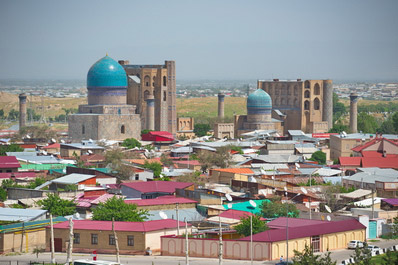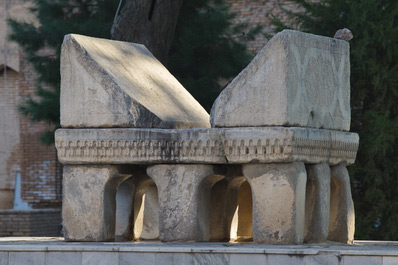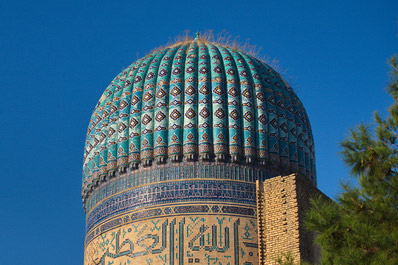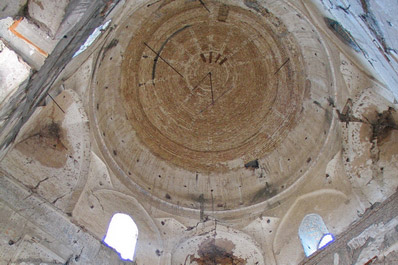Bibi-Khanym Mosque, Samarkand
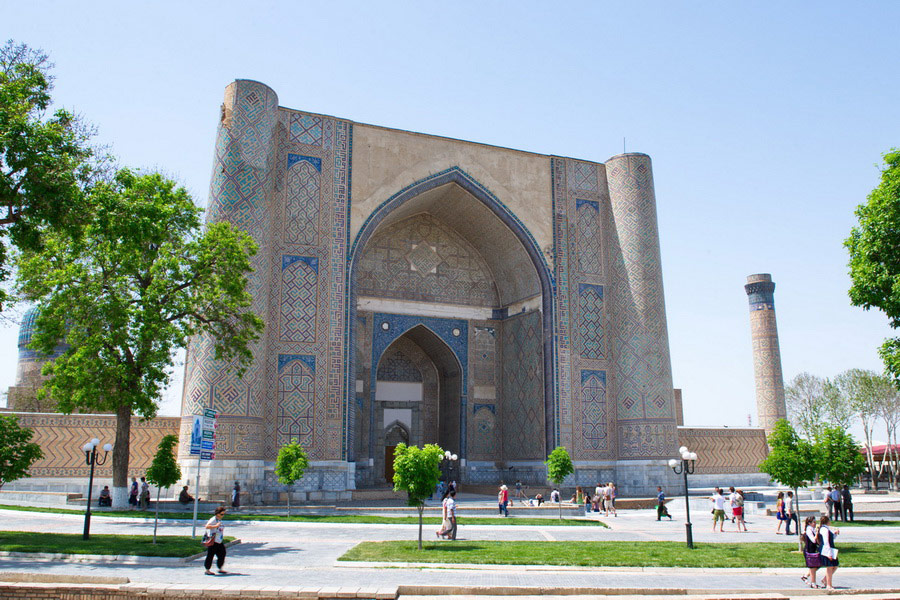
The Bibi-Khanym Mosque in Samarkand is a monumental mosque built by the order of the powerful Tamerlane (Amir Timur) and stands as a vivid representation of the greatness and power of the Timurid Empire.
This grand structure was constructed in an incredibly short time, just five years—from 1399 to 1404. Hundreds of craftsmen, artisans, and engineers worked directly at the mosque's site, while about 500 more stonemasons worked in remote mountainous regions to extract valuable stones for the walls and columns of the mosque.
Legends about the Mosque
Amir Timur, the conqueror and ruler, decided to build a mosque of immense scale in Samarkand, the capital of his empire. However, as the construction progressed, he left for distant lands on a military campaign, without waiting for the work to be completed. During his absence, his eldest wife, Sarai Mulk-Khanym, took control of the project and decided to finish it as a gift for his return. The completed mosque was astonishing: a massive dome, elegant decorations, tiles, and ornaments—all reflecting the colossal scale of the work and the wealth and power of the empire. However, when Tamerlane returned from his campaign, he was displeased because the Bibi-Khanym madrassah opposite the mosque had a higher peshtak (entrance portal). Enraged, he ordered the mosque's peshtak to be demolished and rebuilt on a larger and grander scale.
Another legend involves the mosque’s chief architect. It tells of a talented master who fell in love with Sarai Mulk-Khanym. He promised to complete the construction of the giant mosque in a way that would please Amir Timur, but in return, Sarai Mulk-Khanym had to let him kiss her. She reluctantly agreed, but upon Tamerlane's return, the rumor of the kiss reached him. Furious, Amir Timur ordered the architect to be imprisoned forever in the dungeons of the mosque.
A third legend suggests that the Bibi-Khanym Mosque, built by Amir Timur in honor of his eldest wife, began to deteriorate quickly due to poor planning. Shortly after its construction, the grand entrance portal collapsed.
Regardless of these stories, the mosque became known as Bibi-Khanym, after Amir Timur's eldest wife, although its official name was "Masjidi jami", meaning "Friday mosque".
Architecture
The complex's main axis features a frontal entrance portal and the mosque building with a massive blue dome. On the courtyard's transverse axis are two identical portal-dome buildings—two small mosques. The numerous arched vaults within the walls create a complex rhythm in the mosque's architecture, combining impressive proportions into a unified whole.
The unity of the artistic concept is also evident in the color scheme of the patterns. The mosque's walls are adorned with a grid of large diamond-shaped figures and Kufic inscriptions, set against a terracotta brickwork background with blue, white, and turquoise glazed majolica tiles. The color blue dominates the wall decorations, peshtak details, and the large turquoise dome.
The Bibi-Khanym Mosque, as one of the key architectural monuments of the Islamic world, epitomizes the power and grandeur of Tamerlane's empire. It showcases not only the skill of medieval architects but also the deep religious and cultural significance of the structure for Muslims. Today, the Bibi-Khanym Mosque remains a symbol of spiritual heritage, attracting pilgrims and tourists from around the world. It is also listed as a UNESCO World Heritage site.


